
38 minute read
ANZA Action
Project Dignity Events Manager CINDY BERLANDIER talks to ANZA about the innovative platform to engage in social good through local food.

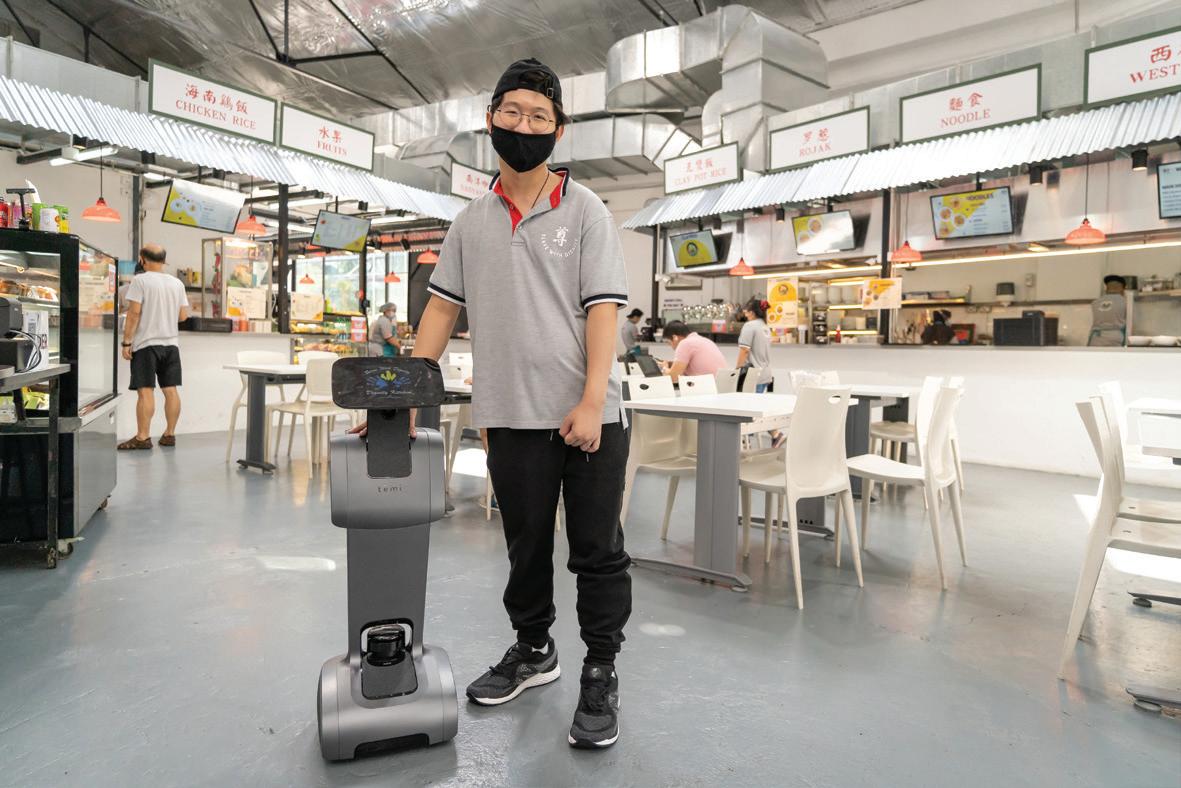


Dignity AI uses remote controlled robots
WHAT IS PROJECT DIGNITY?
Established in 2010, Project Dignity is an all-in-one platform to engage in social good through local food. Our mission is to restore dignity to the disabled and disadvantaged through skills training and job placement (Dignity Learn), employment (Dignity Kitchen and Dignity Mama) and integration (Dignity Outreach). Part of our award-winning social enterprise, Dignity Kitchen is the world’s first and only ISO22000-certified food court run by differently-abled stall managers. Our focus is on Singapore hawker culture (recently listed as a UNESCO intangible cultural heritage). Dignity Kitchen opened in Hong Kong in December 2019, bringing our street food to an international arena.
WHAT DOES PROJECT DIGNITY OFFER?
Since starting with three humble stalls in Balestier Road, we have organised over 2,000 lunch treats and delivered to a wide range of organisations - from SMEs to Fortune500 companies. During the recent COVID-19 Circuit Breaker period we received contributions from generous corporates and individuals to provide 800-1000 Bento meals daily to frontline healthcare workers at five hospitals and subsequently to more than 25 elderly nursing homes throughout Singapore. We are now located at our own building at 69 Boon Keng Road, with nine stalls, a training and production kitchen, classrooms and an events space.
HOW DO YOU WORK WITH PEOPLE WITH DISABILITIES?

Currently 60% of our staff at Dignity Kitchen are Persons with Disabilities. We teach our trainees the basics of food safety and hygiene, preparing ingredients, interacting with guests, and processing payments.
Our trainees undergo a structured vocational F&B training programme, some of whom are on the Autism Disorder
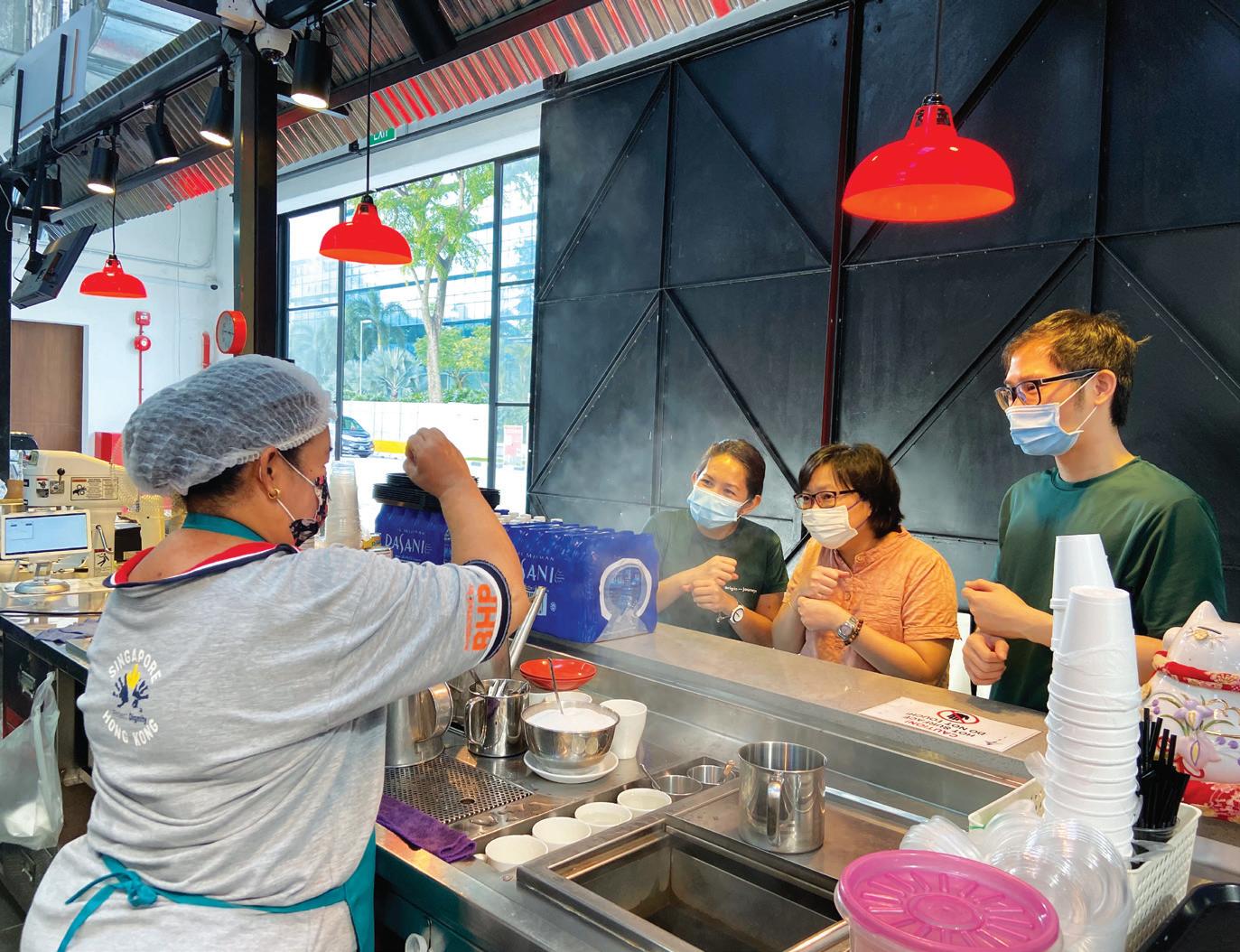


5 out of every 100 people with disability are employed… Project Dignity hopes to change that!
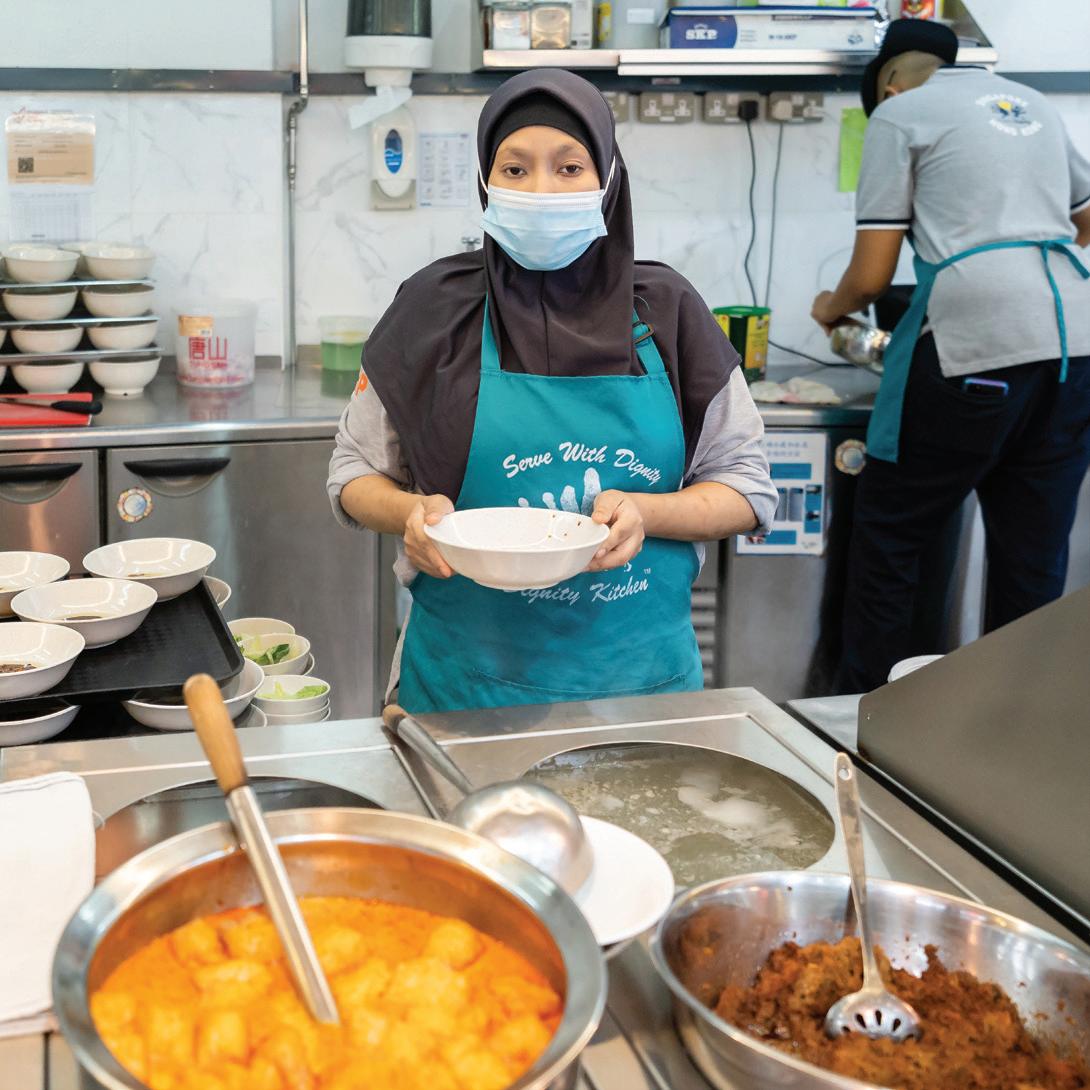

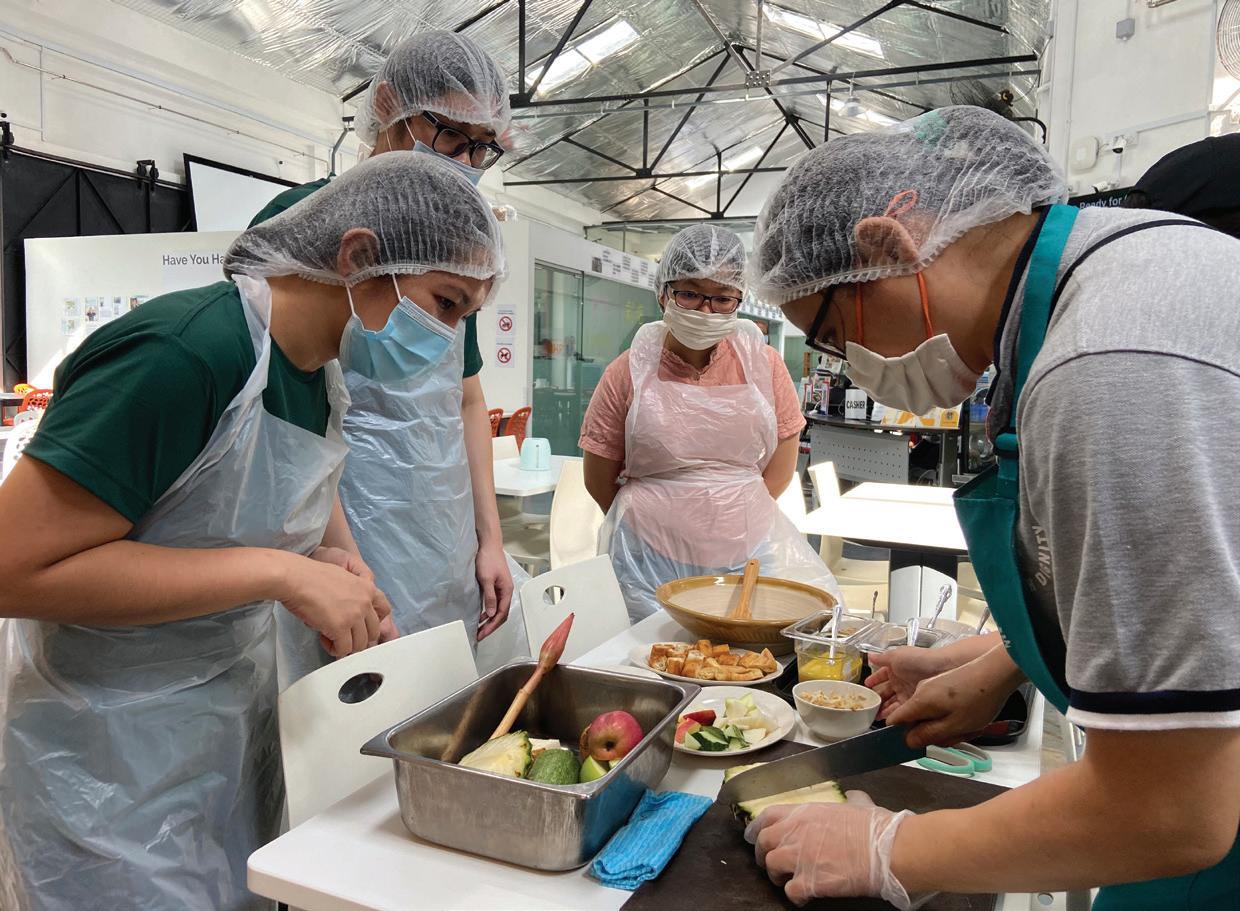
Spectrum, or they have polio, cerebral palsy or depression. Trainees are also paid a daily allowance throughout the programme. Upon graduation, we prepare them for interviews with our employment and industry partners. Some go on to work for us at Dignity Kitchen and Dignity Mama.
Our team of Trainers are Certified in Training and Assessment and come with years of experience in the F&B industry. They are passionate about imparting not just basic culinary skills, but also life skills to our trainees.
Dignity Learn is the division that conducts the training programmes and classes for both special needs and able-bodied members of the public.

WHAT IS DIGNITY MAMA?
Dignity Mama is our secondhand retail book shop. Currently we have kiosks in four hospitals, with another pushcart scheduled to begin operating in July 2021. Dignity Mama presently employs nine teams of young adults and their supportive caregivers to run the kiosks. This enables young adults with disabilities to gain basic entrepreneurial skills and lead independent lives.
DO YOU HAVE ANY NEW PROJECTS?
A new initiative that began in mid-May is the Dignity on Wheels delivery service. Food orders for hawker fare and bakery items will be delivered by staff who use wheelchairs to within 1km of our premises.
Also in the pipeline is the Dignity AI project which will enable paraplegic individuals to work from home by using a remote-controlled robot. These robots can be used in hospitals, shopping centres and food courts, with the differently-abled using AI to answer queries or address immediate customer needs.
WHAT’S PROJECT DIGNITY’S MISSION?
We want every person who walks out of our training centre to project a sense of dignity through earning an honest living. We empower them with skills, employment and most of all, the opportunity to be a productive member of society. This is the reason we are set up as a business entity with a social mission, instead of a charitable foundation.
HOW CAN ANZA MEMBERS OFFER THEIR SUPPORT?
By ordering Bento Hawker Fare or Bakery Items from our Dignity Kitchen or contributing to our Meal Treats as part of our Social Outreach Programmes for needy families. Also, by supporting our Dignity Mama book stalls which have a range of good condition secondhand books as well as handicrafts.
Project Dignity 69 Boon Keng Road 339772 projectdignity.sg
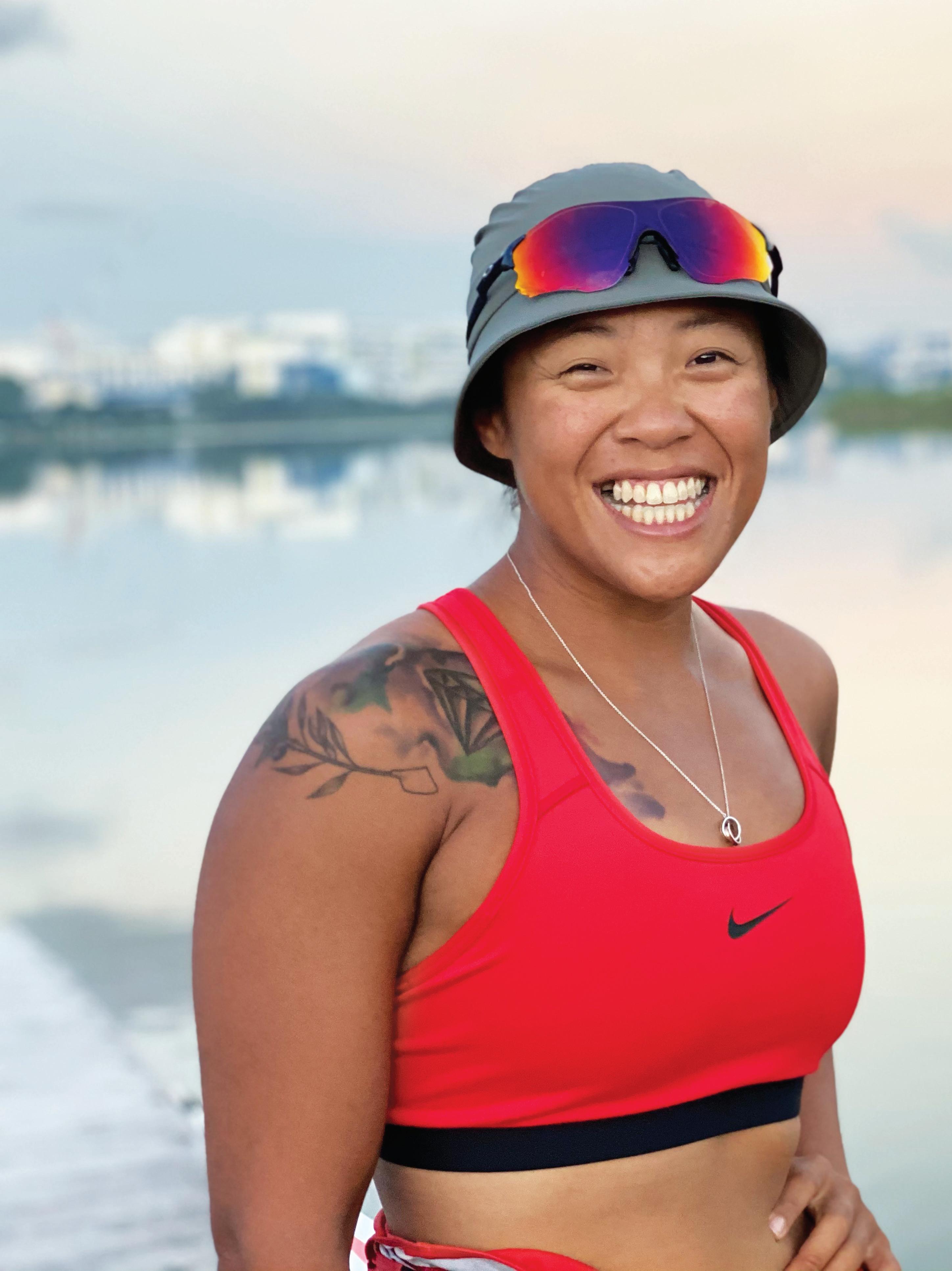
Rowing Her Own Race
Rower JOAN POH qualified for the Tokyo Olympics, after finishing 12th at the Asia and Oceania qualification regatta in Tokyo on 7 May. It was an anxious wait for the determined athlete, who had to serve out a 21-day hotel quarantine after returning from Japan. Joan talks to ANZA about her passion for the sport and the promising women’s rowing team she is helping to develop in Singapore.
When did you first start rowing?
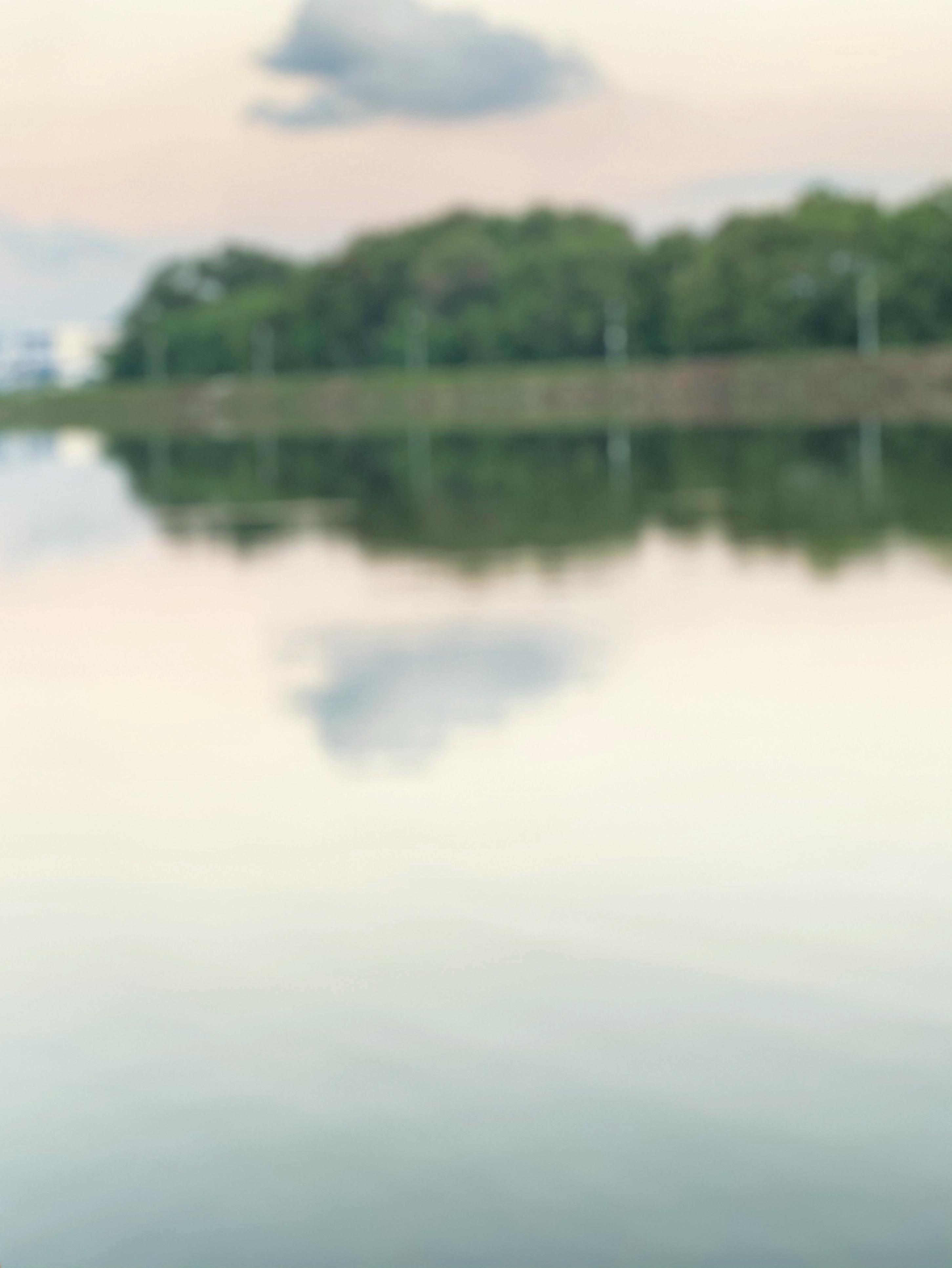
I picked up rowing in 2015. At the time, I had taken a gap year from university to sail the 49er FX, aiming to qualify for the 2016 Rio Olympics. However, my sailing partner had broken her hand during a capsize when we were racing at the Sailing World Championship. That left me stranded, not knowing what to do. A friend told me the Singapore Rowing Association (SRA) was recruiting a team to represent Singapore at the Southeast Asian Games (SEA Games) to be hosted in Singapore in 2015, just as I was contemplating a work and travel holiday in New Zealand or Australia. I made the team and raced in the women’s pair over the 500m and 1000m distance. I stopped for a couple of months before jumping back in when there was news of a foreign coach coming in. It was sometime in May 2016 that I learnt to row the single scull.
What do you love about the sport?
I love that rowing challenges and grows me both as an athlete and as a person. It can be so hard; you have to find the deepest grit to push through some training pieces. Rowing has taught me values I now hold dearly – versatility, resilience, commitment, excellence, and kindness.
Rowing isn’t a well-known sport in Singapore, why did you choose it?
Although rowing started out as an opportunistic adventure, it’s become the sport for me. It’s a tough sport, one that you have to keep choosing over and over again. On good days, I’m sucked into the constant, addictive chase for mastery and a drive to keep getting better. There are so many things to perfect in rowing – strokes, posture, power, rigging, strength, stamina…so much room for growth. On bad days, it’s the idea of being in a unique position, with a unique opportunity that keeps me going. Rowing is virtually unheard of here in Singapore, so it makes me feel like what I’m doing is special. Being the only rower representing my country internationally since 2017, I’ve felt honoured to fly Singapore’s flag at races. I’m committed to increasing the visibility of rowing in Singapore and to share the sport with a younger generation.
How would you like to see rowing develop here?
Currently, rowing takes place in the secluded Pandan Reservoir in the West of Singapore. Since we learn a lot from what we see, rowing is often mistaken for kayaking, canoeing or dragon boating, which is common on the waters around Gardens by the Bay. I would like to work with the Singapore Rowing Association to take rowing activities to other parts of Singapore, to increase its visibility and spark curiosity towards the sport. I’m also hoping to reach out to schools and organisations who help at-risk youth, to introduce and engage young people in rowing from less privileged or at-risk environments; to help them find a niche, develop confidence and find rewarding ways to spend their time. That’s what sports did for me.
You worked as a nurse during the pandemic?
Yes. Prior to the pandemic, I had taken a period of unpaid leave from my work as a hospital nurse to pursue full time
training overseas, in preparation for Olympic qualification. When I returned to Singapore in March 2020, I also returned to work in the hospital as the government called for allhands-on-deck at the healthcare frontlines. It felt like a natural duty and my responsibility as a nurse. I work as a staff nurse in TTSH’s renal unit with dialysis patients. The hospital also supports the National Centre for Infectious Diseases (NCID), so if I had to attend to patients in the NCID, I’d have to shower after every dialysis procedure performed. On some days that meant showering up to three times in a shift! I trained twice a day – before and after my shifts, around 20-30 hours a week. Working at the healthcare frontlines it was really heartening to see the public and businesses sending love and support in their own little ways to us during this time. On grimmer days, these gestures really filled our hearts! In March 2021, I took unpaid leave from the hospital again, to train full steam for the Asia and Oceania Olympic qualifying regatta in May.
What achievements have you been most proud of?
For a long time, I thought that achievements must come from podiums, medals, erg scores and personal bests. But during Singapore’s Circuit Breaker in 2020, together with the Singapore Rowing Association I put together a women’s rowing team. My partner also helps with the logistical and operational stuff. The rowers come from all walks of life – mostly they’re working full time but we have a few students. They’re ex-teammates of mine, sisters of ex-teammates, juniors, best friends, and students who have returned to Singapore from studying overseas and rowed while they were there. Today, we have a team of 11 women who picked up rowing last June. They’re training diligently and hoping to experience racing at the 2021 SEA Games, scheduled to take place in Hanoi this November. Other than having held on and pursuing rowing against all odds, this is the proudest achievement of my rowing career.
You don’t have the height of other rowers, has that made you more determined?
It took a while to discover this determination. I’ve had to look for inspiration and examples of “outlier” athletes to understand that not all hope is lost! Speaking to experienced coaches and athletes has also shed plenty of light on how I could capitalise on my other attributes to keep a competitive edge. Seeing Jeannine Gmelin from Switzerland (1.7m) becoming the World Champion in 2017, beating Victoria Thornley (1.9m) from Great Britain – seeing them standing next to each other on the podium – was truly an inspiring moment for me. No one should ever be told that they are too small or “not enough” to do anything. With the right heart and desire, anyone can blossom and go on to achieve what they set out to do.
There has been so much uncertainty about the Olympics – how have you stayed optimistic?
In the earlier days while waiting for news on the Olympics, I found myself waking up a few times a night, reaching for
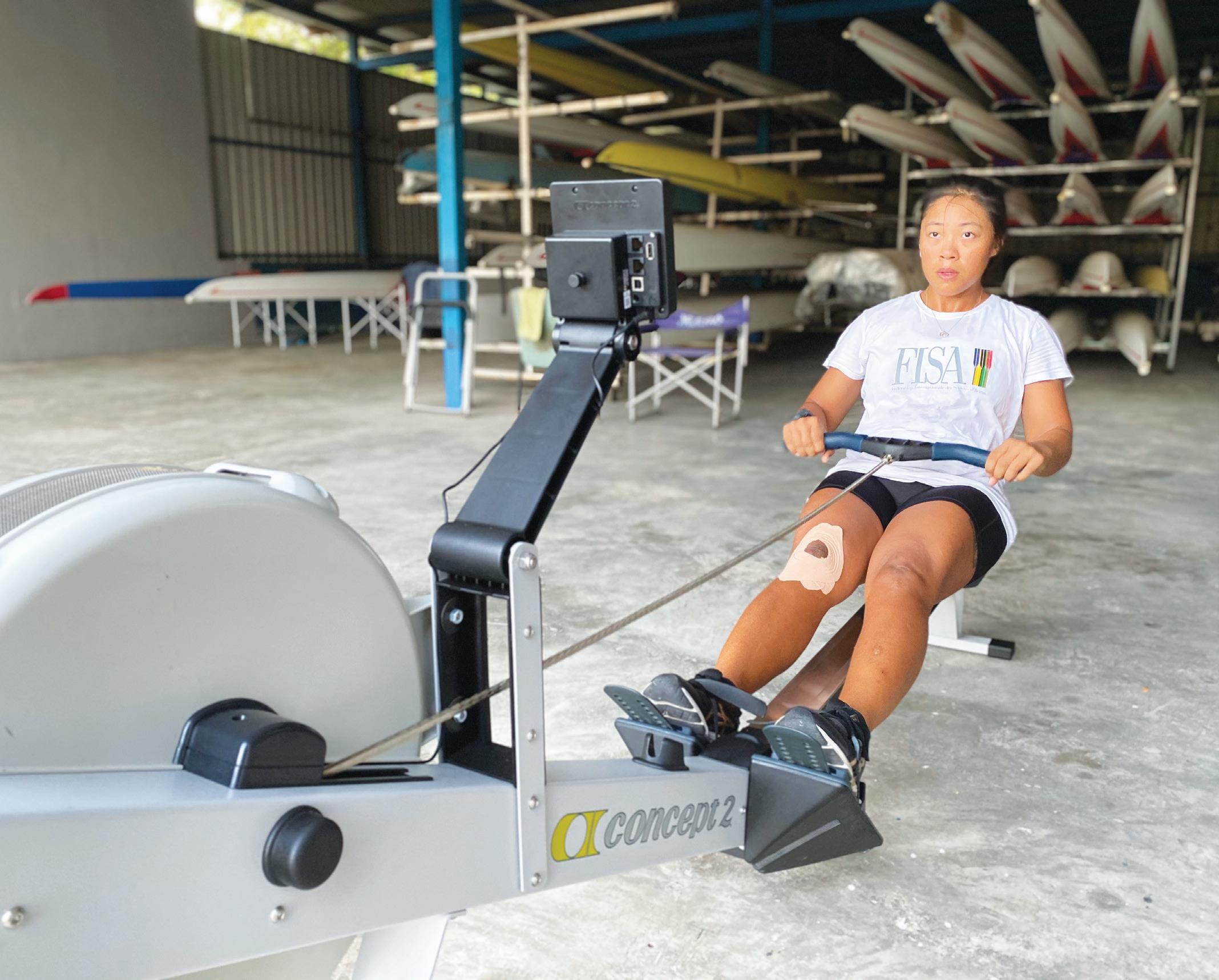
The Australia-New Zealand connection
Joan trained with well-known rowing coach David Orchet in Melbourne and was housed with the Scotts - a rowing family. “The rowing culture in Australia was such a joy to be around and so refreshing to experience!”
Joan and her partner are planning to say ‘I do’ and start a family in New Zealand! “My partner and I are planning to get married in New Zealand. If anyone at ANZA could recommend a fertility clinic or Obstetrician for IVF in New Zealand, that would be perfect!”

my phone to check World Rowing and news outlets for updates. It felt like I was running a marathon and the finish line kept shifting. I couldn’t see the finish, I didn’t know if I would, but I had to keep running. Leading up to the Olympic Qualifiers, it was a complete emotional rollercoaster. I was constantly wondering if the games would be cancelled. The travel policies during the pandemic were constantly changing based on the changing situations in the different countries. In such unprecedented times, there was also a huge amount of logistical and administrative arrangements. I got a lot of help and support from the people who love me, my sports psychologist, my coach Laryssa, and our women’s team who volunteered to put in double sessions on the water, so it was less lonely for me in my single boat – the theme this past year has been to let go of the uncontrollable and control the controllable.

Living through the ups and downs of Covid has impacted the sleep of millions. DR CATHERINE PHAN from International Medical Clinic (IMC) offers advice for good sleep hygiene, so you can rest easy.
Why has the pandemic impacted our sleep so much?
Insomnia, difficulty with sleep onset and/or sleep maintenance is common and affects many of us at some point in our lifetime. With the COVID-19 pandemic part of our daily lives now, it comes as no surprise that there’s been a significant surge in sleep issues, impacting many of us physically and emotionally.
For some, this is due to the changes in routines and major disruptions to daily life. With ever-changing restrictions, lockdowns, school closures and working from home, it’s easy to have blurred boundaries between work and home. We lose track of time and our wake, nap and sleep times are altered. We are going out less, so there is decreased exposure to sunlight, less exercise and more screen time. All this can lead to a disruption in our normal circadian rhythm and healthy sleep behaviours.
For others, significant stress, anxiety and worries have become evident with the uncertainties around COVID-19. Fears about our health and the future, stress with employment and finances, social isolation and increased pressure with family obligations can make it impossible to get a good night’s sleep. It’s easy to extrapolate that rates of depression and anxiety have also skyrocketed during these unprecedented times.


When should we worry about losing sleep and waking in the night?
It is normal to have lighter and deeper sleep across the night and very brief awakenings. However, if you are having ongoing problems with getting to sleep or maintaining sleep, which is affecting your everyday function, it’s best to seek professional health advice.
It is also important to talk to your doctor about excluding other underlying causes. These may require further assessment and may present as: Persistent low mood and anxiety Severe snoring, daytime sleepiness, morning headaches and restlessness in bed, which may be due to sleep apnoea or restless leg syndrome Chronic pain, shortness of breath, sinus issues, symptoms of menopause that may be contributing to poor sleep Increasing reliance on alcohol or over the counter and prescription medications
WHAT ARE THE HEALTH IMPLICATIONS OF NOT ENOUGH SLEEP?
While everyone’s sleep needs may be slightly different, around 7 to 9 hours of good quality sleep daily is recommended for an adult. Poor sleep can cause a decline in cognitive function, including reduced concentration and memory. It can also have a negative impact on mood and emotional regulation that can manifest as anxiety, depression, and other mood disorders. Mental health wellbeing and sleep can co-exist and impact each other and this in turn can cause a vicious cycle if not addressed early.
Persistent poor sleep can also affect our physical health. We require sleep for recovery and immune function. Studies have also shown a possible link between insomnia and increased cardiovascular risk, including high blood pressure and heart disease, due to an increase in sympathetic nervous system activation, as well as an increased risk of diabetes and metabolic disorders.
What are some therapies for sleep?
There are many things you can try first, before going down the medication route. They include establishing good sleep habits and helpful behaviours. Studies have shown these to be more effective long-term than medication for chronic insomnia.
PRACTICING GOOD SLEEP HYGIENE AND HEALTHY LIFESTYLE TIPS:

Maintain a consistent bed and wake time every day. Avoid screen time before bed and cut back on news and social media. Limit news to a few reputable sources only. Avoid stressful ruminations before or at bedtime. Allocate time earlier in the day to reflect and address worries. Unwind 1-2 hours before going to bed. Do something relaxing, like reading or meditation and mindfulness, which has been shown to lower stress hormones, and decrease tension. Avoid lying in bed worrying about sleep. If you’re unable to sleep after 20 minutes, get up and do something relaxing, then return to bed later. Increase light exposure during the day and keep the bedroom dark when sleeping. Avoid heavy meals in the evening and aim for a balanced diet with less sugars and fats. Minimise caffeine and alcohol intake. Undertake regular daily exercise, but avoid vigorous physical activity within three hours of bedtime.
MEDICATIONS FOR SLEEP
Sometimes first line CBT-I and sleep hygiene may not be enough and short-term medication may be used in conjunction. It is important to discuss these with your doctor to weigh up the benefits and risks.
Melatonin is viewed as one of the more “natural” options. It’s a hormone that is normally produced by the pineal gland in the brain and plays a role in improving sleep onset and regulating the body’s internal clock of sleep and wakefulness. Hypnotics such as benzodiazepines and the z-drugs are also other options. They are recommended only for short durations due to their risk of dependence, daytime drowsiness, cognitive impairment, and insomnia on cessation.
If also treating a co-existing or underlying cause for insomnia, sedating antihistamines, anti-depressants and anti-epileptics may also be used. COGNITIVE BEHAVIOURAL THERAPY (CBT-I):
CBT-I is evidence-based and recommended as first line therapy. This can be undertaken online or with a trained psychologist. It consists of structured sessions that focus on removing unhelpful beliefs about sleep and changing behaviours to aid sleep, stimulus control and progressive muscular relaxation.
NATURAL HERBAL SUPPLEMENTS:
Valerian, chamomile, passionflower, hops and kava preparations have been used as sleep aids for insomnia, however there has been very limited evidence on their overall effectiveness. Although these appear to be generally well tolerated, some can have side effects and may affect the liver. Herbal preparations may also interact with existing medications, so it’s best to seek advice from your GP before considering any of these options.
Apps for sleep
There are many accessible resources that can be found at your fingertips. Effective meditation and mindfulness apps include Headspace, Smiling Mind and Calm. For self-directed Cognitive Behavioural Therapy, CBT-i Coach is available as an app and Sleepio and This Way Up provide online courses that can done at any time of day.
USEFUL WEBSITES: sleephealthfoundation.org.au sleepio.com/cbt-for-insomnia thiswayup.org.au/courses/managing-insomnia-course
Dr Catherine Phan is an Australian doctor who graduated from the University of New South Wales in 2007. She holds a Diploma in Child and Adolescent Health (USYD) as well as a Certificate in Sexual and Reproductive health from Family Planning Australia. Find her at IMC Jelita. imc-healthcare.com
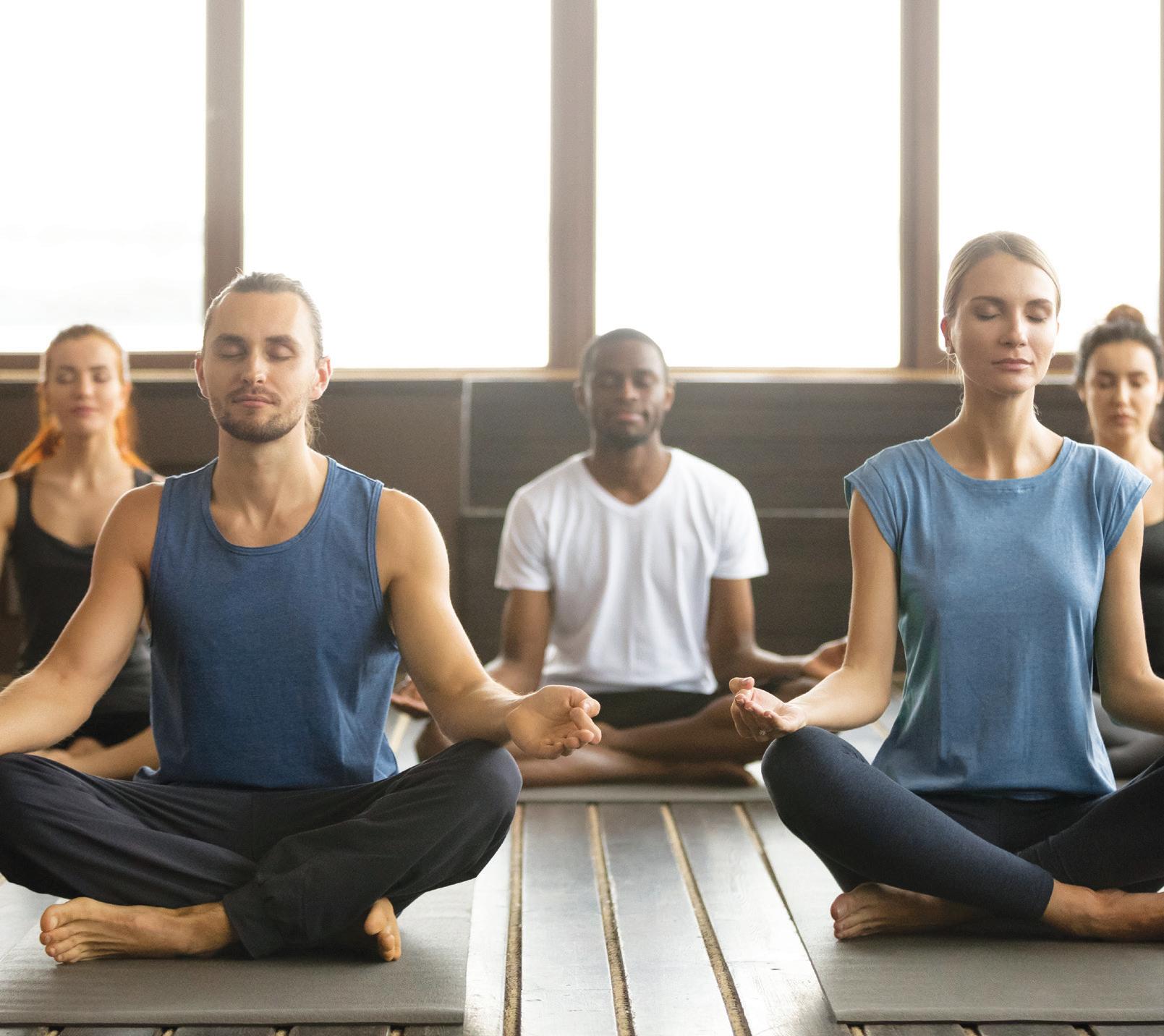
Aged just fifteen, Dulwich College (Singapore) student ANNABELLE REHN is already competing on the world stage in dressage. Annabelle talks about the challenges and triumphs of her sporting career.



How long have you lived in Singapore?
I moved with my family from Malaysia in 2017 to attend secondary school and I’ve been living in Singapore almost four years.
Where are you based?
Under normal circumstances I would be based in Singapore about 20 days of the month attending Dulwich College (Singapore) and I’d do my daily equestrian dressage training at Singapore Turf Club Riding Centre (STCRC) in Kranji. The other 10 days of the month I’d be in Denmark, where I keep my competition horses. This is how I’ve balanced my school, training and travel between Singapore and Europe since I was 13 years old.
Because of the Covid situation and the restrictions to travel, including extensive quarantine regulations, I’ve had to remain in Denmark for extended periods of time. Between May – December 2020 I was living there without my family. Since March 2021, I have been based in Denmark to prepare for the European Junior Dressage Championships held in Spain in July 2021.
When did you first get involved in dressage?
My first time sitting on a pony was when I was 18-months-old. It developed into trotting and cantering by the age of three years. At four, I was riding regularly and ready to compete in my first walk-trot competitions. Holding my first rosette was thrilling, and I’ve never looked back.
Why do you love the sport?
Equestrian sport is all about teamwork between you and your horse; it’s complicated and challenging. Horses are beautiful animals with a strong mindset, requiring you to always think ahead and analyse the situation for the best result. I feel motivated from growing and developing the partnership between myself and my horse, which takes years of commitment to refine and to fully understand each other. I take a holistic view of my horse by optimising and balancing training, feeding and


general horse management. My horse remaining motivated and happy is key to my success.
Who is in your support team?
As an equestrian athlete, I’m very dependent on a strong support system including family, coaches, vets, therapists, farriers, saddlers and many more. I’m always open to other points of views. I feel humbled by the support I receive and continue to challenge myself to learn in a sport where you will never become the expert.
How hard has Covid made it for you to train and compete?
It has meant I’ve had to live in Europe for long periods of time alone. In 2020, I had to get up at 2am to follow online learning at Dulwich College (Singapore) in Singapore time. At 9.30am, the Singapore school day was over and I would begin work in the stable and training the horses. In the afternoon, I would attend to my homework and other exercises before going to bed at 6.30pm to be ready for the following day. It was challenging!
What have been your proudest moments as a competitor?
Winning the bronze medal at the European Championships in Italy. It was an incredibly tough journey, which started in Singapore. I flew my horse to Holland in April 2019 and qualified in international competition to represent Denmark. I learned that hard work and commitment will get you there. It took me a couple of days to realise that I had actually won bronze among 60 of Europe’s best young riders from Germany, Holland, England, France, Russia and many more nations. From this achievement, I was ranked 5th in the world, which was another amazing feeling and proud achievement.
How has Dulwich College (Singapore) supported your sports career?
Their IGNITE Sports programme (formerly known as SASP Student-Athlete Support Programme) is incredible. Thanks to the outstanding support of my teachers and counsellors, I’m able to compete for months at a time, while keeping up with my schoolwork. It’s designed to provide additional support for students who are striving for the highest standards in their sport and academic studies.
What do your friends think about your amazing achievements?
My friends see me as Annabelle, their classmate, and not the equestrian athlete. That’s the way I like it, too.
What are your goals in the sport?
I would like to represent Denmark at the Olympics one day, maybe in seven years’ time.
What other activities and passions do you have outside dressage?
Besides practicing upwards of 3-4 hours a day, I keep up my fitness with running, balance and weight training. When I’m free, I enjoy spending time with my friends and eating at Singapore’s many amazing eating spots.
With constant COVID-19 cancellations, uncertainty and change, our kids and teens have done it tough over the past 18 months. How can they build mental resilience to cope with an unfolding global pandemic? Australian International School (AIS) Wellbeing Coordinators DUNCAN ROSE (Years 9-12) and BERNADETTE WARD (Years 6-8) offer advice.
It’s easy to forget the resilience displayed by our children and teenagers during COVID-19 and to focus on the negatives, rather than the positives. Despite disruption to their lives, uncertainties and challenges many young people have developed determination, grit and personal coping strategies - skills that couldn’t have been fostered without the intervention of a global pandemic.
During May and June this year, schools in Singapore returned to operating online and the second wave of Home-Based Learning was thrust upon students, staff and the wider community. However, lessons learned in 2020 were applied in the 2021 context. For many, our skill sets in navigating this challenging time were strengthened, with more diverse tools to handle adverse situations.
As educators, we’re inevitably reminded by the media about the damage done to our students’ psyches during COVID-19, with only fleeting reference to how they’ve also learned to adapt and develop to the situation. We talk about the damage wrought to friendship groups but sometimes forget that in many cases, stronger bonds have been forged with parents and family.
Many children have shared joyful stories of spending more time with parents who prior to the pandemic, frequently travelled internationally for work. This has resulted in children better connecting with their parents and learning more about them as people. Some families have used the opportunity to reflect on life before the pandemic, and collectively reassess what’s important to them as a family unit.
Building resilience in our kids and teens is so important and is the job of everyone within our community. The African proverb, “It takes a village to raise a child,” has never held greater meaning. Everyone is a role model for the children in our society so it’s important to display the behaviours we wish our children to reflect.
There are many ways we can assist in strengthening the social, emotional and mental wellbeing of children and teens in our care.

Establish and model healthy routines for study/ work, socialising and sleep.
Establishing regularity builds routines and creates structure to days that feel all too similar. To prevent bad habits forming, such as going to bed and getting up late, create an ‘artificial’ day which reflects a normal school day i.e. waking at the same time, going for a swim or run instead of travelling to school, eating a healthy snack and sharing a lunch break.
Help children stay healthy, both mentally and physically
Physical health can be woven into the additional time students reclaim from being at home – throw in a family morning walk, a game of tennis before lunch or a dance break between lessons. Boost mental health by establishing family and connection time. Break out the board games and have a conversation. Set up a coffee break where all members of the family come together and share how the day is going.


Assist kids in staying socially connected
It’s important for kids to stay connected with family and friends - overseas and locally. Create opportunities for your children to connect, both in person (adhering to current government restrictions) and online. Teenagers need to socialise. Try apps such as ‘Together’ – a video calling app which allows them to connect with friends in their school and in other countries. Teens can also collaborate on online activities and games, fostering their sense of belonging and community. slow the spread of the virus and protect others. Reinforce that practices such as mask wearing, hand washing, and other hygiene-related procedures ensures their safety.
Encourage adolescents to seek help
Teach your kids and teens that assistance when required is a sign of strength, rather than weakness. Be open and encouraging when they reach out for help. Sometimes all they need is for someone to listen.
Prioritise your own wellbeing.
Just like on an airplane, you need to put your own oxygen mask on, before you attend to others. If you are calmer and more rested, you’ll be in a better position to support your children. Be kind to yourself first, look after your own mental and physical health and you’ll find you have more resources, time and patience to help look after the loved ones in your life.
Recognise and address their stress and fear
ais.com.sg
Young people may be feeling heightened anxiety and sadness as they come to terms with being separated from family in their home country and also saying farewell to their Singaporebased friends due to international relocations. Grief is a normal response to losing someone or something which is important to us. Allow your children to go through the grieving process and support them by being sympathetic and understanding.
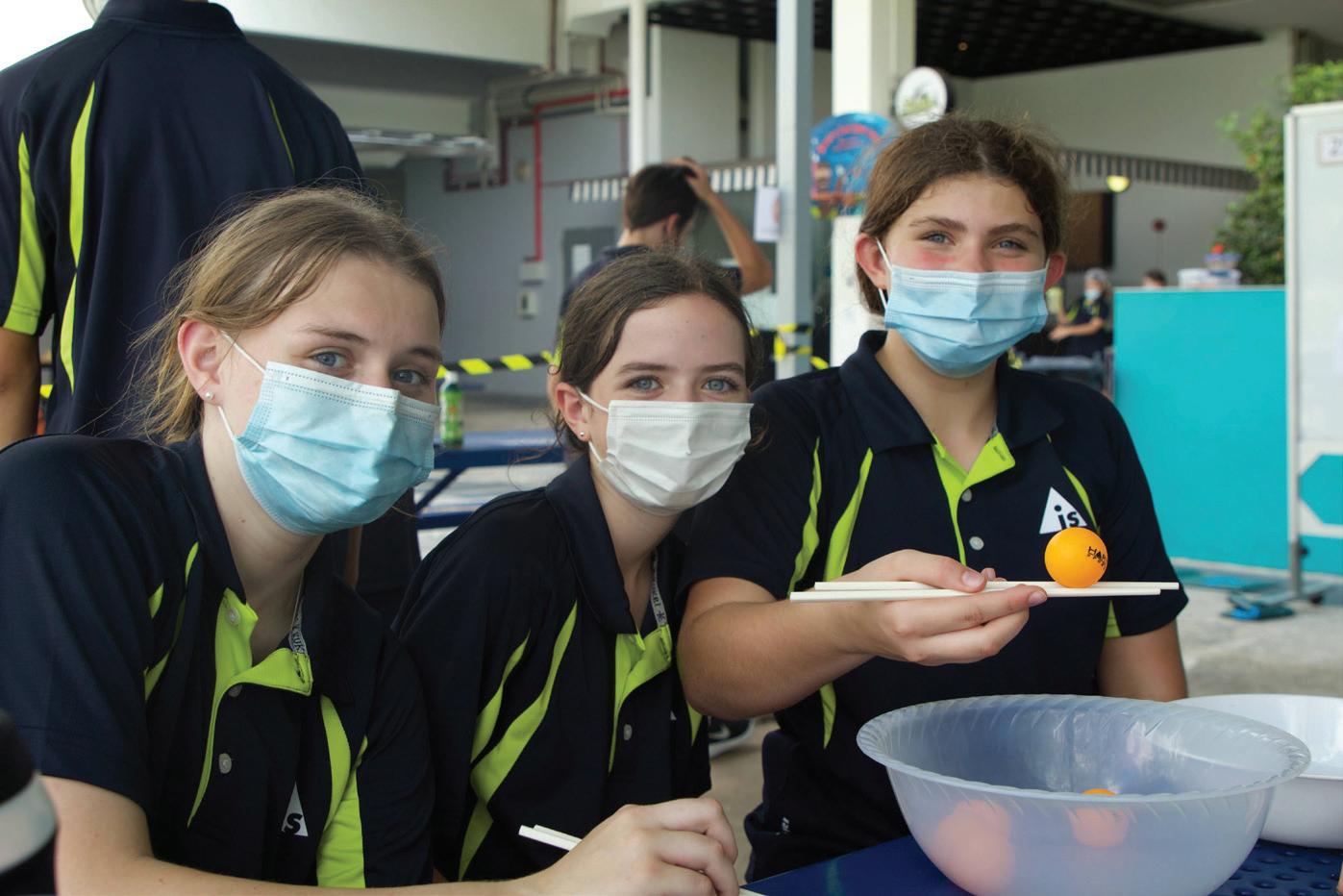
Teach and reinforce preventative actions
Many kids may be feeling fatigued with COVID-19 preventative measures but remind them these small actions will
Arthur Zaaro is on a mission to create heirloom cutting boards and tables using the world’s most beautiful trees. He chats with TAMMAR STEIN about his sustainable business, which uses Singapore’s local tropical hardwood cut during landscaping and building.

Iwas at a friend’s chic home clinking glasses and nibbling on cheese, when something on the lovely board caught my eye… and it wasn’t the gorgonzola. There was seal on the beautiful wood that read: 100% Grown and Made in Singapore by Arthur Zaaro. How could the Red Dot possibly have a local timber market? A quick Google search revealed a small but brilliant niche business. Before long I was off to Arthur Zaaro’s showroom and workshop at the Richfield Industrial Centre in Geylang to make a cutting board of my own and learn more about his work.
Setting up shop in Singapore
Arthur, his local staff and two very friendly dogs welcome me to the showroom. Sitting at one of his beautiful tables Arthur and I chat about how he came to woodworking. Originally from the United States, Zaaro has lived in Singapore since 2005. He first trained as a zoologist and later worked on movie sets in New York City, before moving to Singapore after marrying a Singaporean. “She wanted to live in New York City,” he says with a grin, “and I wanted to live in Singapore.”
Arthur got his way, the couple relocated and he founded an eponymous furniture and design business. To source his high-end tropical hardwood, Arthur travelled to Indonesia and Malaysia to purchase top quality lumber, at the same time trying to verify that it came from sustainable forests with good management practices.
He quickly ran into problems. “Lumber is a highly unregulated industry,” Arthur explains. “When your computer chip says, ‘made in Taiwan’, it was. But your lumber could be stamped with anything and no one actually knows where it came from.”

Sourcing from trimmings
Frustrated by the difficulty he had securing sustainable wood, Arthur had an epiphany. Singapore’s streets and highways are lined with some of the world’s most fabulous trees, including




Tammar makes her own cheese board

African Mahogany, Rain Trees, and Angsana. This was thanks to Prime Minister Lee Kuan Yew who launched a tree planting campaign in 1963. By 1967, Singapore was already known as the “Garden City.”
But as every motorist knows, where there are gorgeous trees, there is tree maintenance. Singapore disposes of more than 10 tonnes of urban-cut branches and trees on a daily basis. Some of the world’s most desired and endangered wood was being cut down and turned into mulch.
“Singapore isn’t set up to mill lumber. It’s easier to pulp it,” says Arthur. “But African Mahogany is what you make violins, guitars and the dashboards of Rolls Royce cars out of. Angsana is the national tree of the Philippines. It’s so endangered there that it’s illegal to cut it down. It’s treated like ivory. You will be shot trying to log it. Yet it grows abundantly here.”
Once he established relationships with the companies hired to trim or cut down local trees, Arthur was able to supply his workshop with trees he knew with absolute certainty had not been illegally cut down in another country’s national park. Arthur Zaaro’s showroom is now a stunning showcase of what this beautiful wood can be: statement tables with live edges and marble-like veining, end-tables, thick slab cutting boards, bowls and spoons.
Board lessons
While the finished products were beautiful, I was more interested in making my own board. Arthur recommended Angsana, which has a light scent reminiscent of Sandalwood. I took his advice and carried the plank to the industrial workshop down the hallway, where a friendly and patient staff member walked me through the steps. I needed to sand down the edges, drill a hole at the top (I chose to place it dashingly off-centre) and round the corners and edges with a router. The industrial machinery was a bit intimidating and visions of missing fingers danced through in my mind, but with gentle advice, I quickly figured out how to safely shape the wood and survived the experience with all 10 fingers intact.
Returning to the showroom, I took in all the benches, tables and boards again and was impressed with this sustainable business model that caused no habitat destruction. Nearly everything around me represented trees destined for mulch and that instead were turned into beautiful functional pieces.
I ask if other cites could follow this business model? “There are a few places that are trying but most cities are nowhere as green as Singapore,” Arthur explains. “If you look at New York City, it doesn’t have many big trees outside of Central Park. African Mahogany and Angsana are literally endangered in their homelands, and you just find them growing by the side of the road here.” He pauses and smiles. “One of the amazing things about Singapore is there are hardly any billboards on the roads. You drive and all you see are these beautiful green trees.”
A week later a package arrives at my door. It’s my new Angsana board, now sporting the seal that brought me to the workshop in the first place: 100% Grown & Made in Singapore.
ARTHUR ZAARO: 122 Eunos Avenue 7, Richfield Industrial Centre #08-07, 409575* arthurzaaro.com *email ahead from the website to schedule an appointment

JUST KEEP SWIMMING


ANZA member TAMMIE GRASS has been in Singapore for over two years, but it was the COVID-19 pandemic that ignited her passion for coaching swimming. She talks to ANZA about her new venture, Swim Squad Singapore and her background as an elite competitive swimmer.
What brought you to Singapore?
The opportunity to explore Asia and experience another culture, while also pursuing job opportunities. My husband, daughter and cat joined me on this adventure. Our wonderful helper Liezel helps hold it all together.
Where is home in Australia?
It was Melbourne but I’m not sure I could tolerate the weather now! Plus our daughter would not be pleased about not being able to swim most days.
What drew you to ANZA?
We joined soon after we arrived as a way to meet new people. I’m involved in ANZA Trailing Talent and have thoroughly enjoyed the Thriving in Singapore presentations. I love the enewsletters and I’m looking forward to my first Ladies Night. It’s such an inviting and warm community. I’ve met some wonderful people through ANZA. I would call them family, so I consider myself very lucky.
What was it like being selected for the Commonwealth Games in 2002?
My story is not one of glory unfortunately. I fell ill about a month out from the Games and didn’t end up travelling with the team to Manchester. It was a hard lesson to learn as an 18-year-old, but it’s shaped the person I am. I never take anything for granted, and try to not regret too much.
I feel really privileged that as a swimmer, I learned under some great coaches. I also had a wonderful club throughout my career. My memories of races on a Saturday at Newman Churchlands, Perth are still some of my fondest. Tell us a bit about Swim Squad Singapore?
Swim Squad Singapore was surprisingly borne out of Covid-19. A few neighbours found out about my swimming background and asked if I’d be interested in helping out. It started as a voluntary ‘this will go nowhere and is a bit of fun’ exercise. But it soon had potential as more and more enquiries came through. I achieved my accreditation through the American Swim Coaches Association and now Swim Squad is here. We cater to all levels and ages and our approach is sometimes a little different, but justified and proven. We’ve had a lot of success in ‘gamifying’ the learning for the younger audience. I have to admit, the more mature don’t mind a bit of fun, too!
What do you offer?
Depending on restrictions, we offer oneon-one sessions, one-on-twos and groups
of four. We can also tailor lessons and plans based on requirements, as long as safety is maintained and there is no benefit lost to the swimmer.
What are your hopes for the program?
I’d like to get a more permanent set up – or at the very least an adequate squad and master’s program based on the club models in Australia. My fondest memories of swimming are of my early club days, which fostered the love of the sport through fun. I like to connect my swimmers if their abilities are similar and then they have a training buddy!

What tips would you give adults to improve their stroke?
4 TIPS TO THE PERFECT TECHNIQUE
Confidence is key. We have a strong emphasis on ‘feeling’ the water. When a swimmer learns to control the propulsion or direction, they realise water is their friend, not their enemy. Once this light bulb moment happens (and it is awesome to witness) then it opens doors to the next wave of learning.
1A good strong (and efficient) kick is really important
3Balance and control – Rock and Roll is not good in 2 Effective ‘catch’ and swimming! ‘pull’ on the strokes 4 Relaxed breathing!
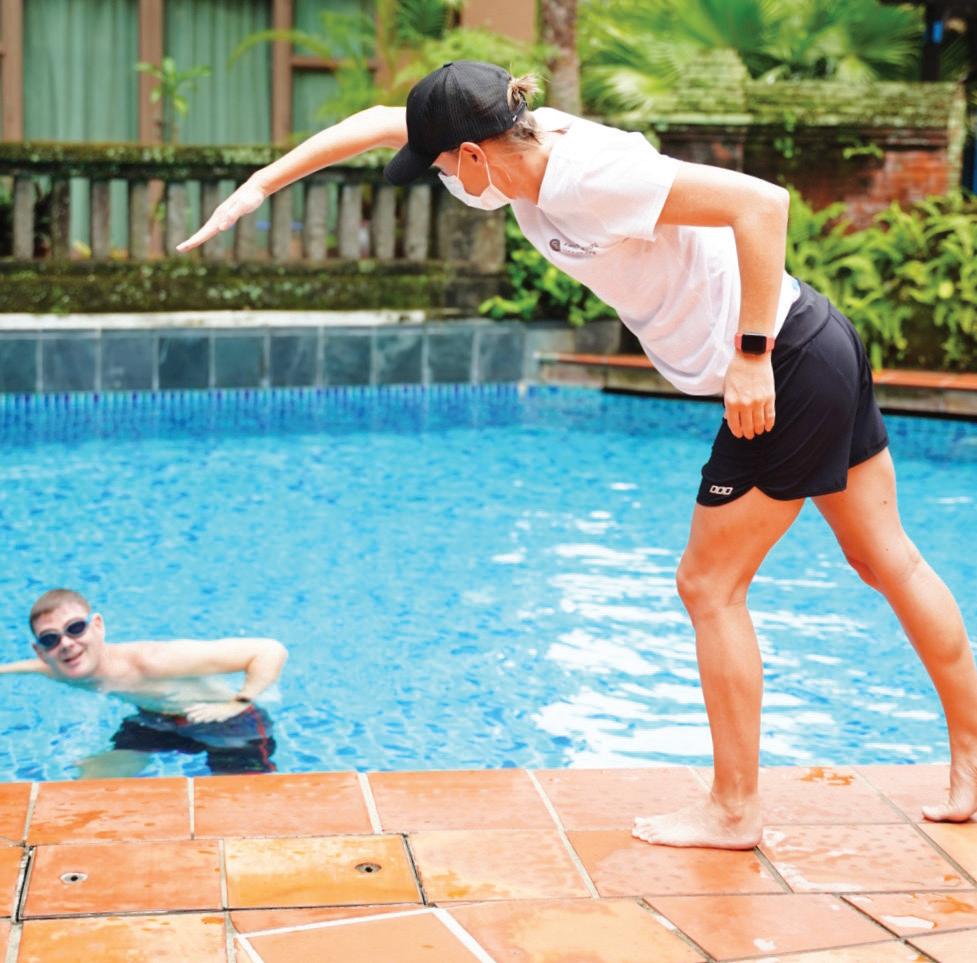

What are the common mistakes you see in swimming?
Breathing and air exchange is by far the most common mistake. If a swimmer doesn’t exhale properly in the water, this results in increased carbon monoxide in the lungs. Then the brain says, ‘no, no, no’.
How often should people swim?
Every day! It’s great for cardio, it’s low impact, heaps of fun and the Singapore climate is suited to it as a sport of choice! If every day is not an option, at least twice a week, and make it fun – it shouldn’t be a chore!
What are your tips for giving your child a great start in swimming?
Get them in the water as often as possible and again, make it fun! My two-year-old is good at swimming but her cannonballs need improving. What are your essentials for a good swimming kit?

Keep it simple – good goggles (with a UV rating to protect the eyes), kickboard, pull buoy and maybe hand paddles for the more advanced swimmers.
What are the benefits of a regular swimming routine, and do you still swim yourself?
Swimming has always been a fun space for me. Learning, training and now teaching my daughter and clients. It can be fun, it should be fun. The exercise benefits stand for themselves, but hating every minute counteracts the gain. A varied, engaging routine is not only a good stress reliever, but you get the workout benefits on top!
For me, swimming is my quiet space, and after a hard day I love to have a good swim and enjoy the silence. I also enjoy doing the sets I task my swimmers with. When they complain I challenge them to double or nothing if I can’t do it. Works a treat.
Ringside Manner
Orthopaedic Surgeon DR ALAN CHEUNG from International Orthopaedic Clinic (IOC), is a sports fanatic who patches up regular clients, alongside elite rugby players, cyclists, wrestlers, and martial artists.

Where is home?
Originally Cambridge, England. I went to medical school and trained in Orthopaedics in London. I worked in Sydney for a year before moving to Singapore. My family and I have been here seven years. We wanted to experience life in Asia, and for our kids to know their relatives who live in Singapore, Hong Kong and Sydney. Being a specialist in sports injuries I’ve had the opportunity to mix my work with my sporting hobbies. I was previously local medical lead in Singapore for the One Championship and One Warrior Series Mixed Martial Arts franchises, Matchday Doctor for the HSBC Rugby Sevens and SuperRugby events. I’m also Events Team Doctor for the Singapore Cycling and Wrestling Federations.
What role has sport played in your life?
I’ve been a lifelong sportsman, taking part in rugby, cricket, hockey, athletics, golf, running, kung fu, Brazilian Jiu Jitsu, Muay Thai, mixed martial arts and cycling, to name but a few! For me, sport is a great way to de-stress, maintain health and wellbeing, and meet new friends. How did you become interested in orthopaedics?
I dislocated both shoulders playing for Cambridge Rugby Club as a teenager. This early experience with rehab led to a lifelong fascination with how the human body works, and how it can recover from injury. What does IOC offer?

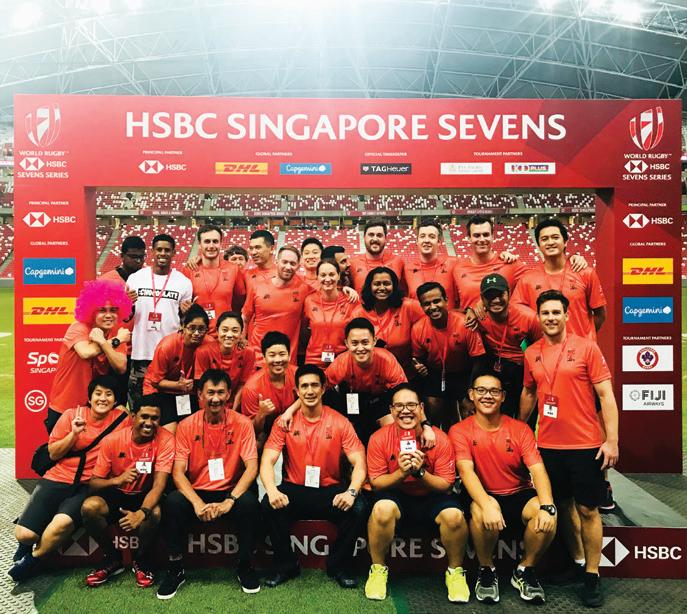
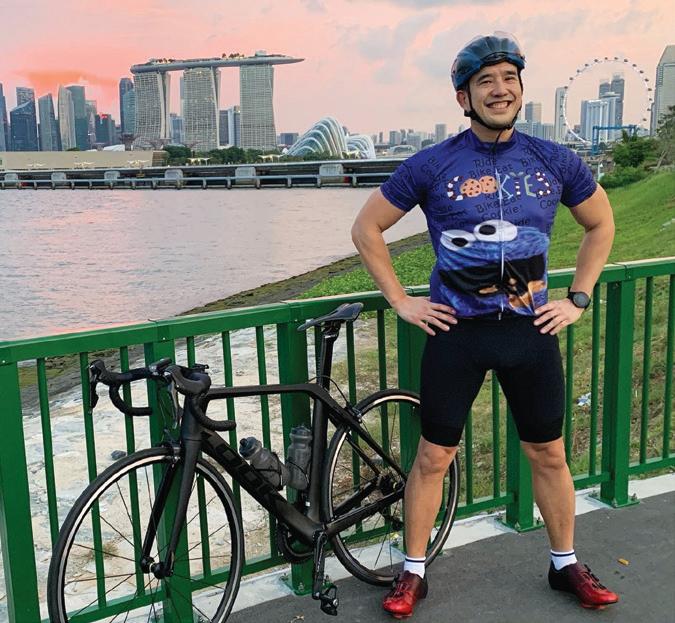
I founded IOC to offer a bespoke service and excellent level of care, similar to the best UK and Australian hospitals I’ve worked in. We usually try non-surgical methods, such as physiotherapy, first. As a sportsman who has suffered numerous injuries, I know what it’s like to be injured and what it takes to recover. I try my hardest to get my patients back to sports as soon as possible, using a dedicated and trustworthy network of allied health professionals.
What led you to this job?
In addition to my Orthopaedic trauma training, I learned important skills from the excellent Singapore Rugby Union pre-hospital medical courses. I started covering local sporting events and was eventually scouted by One Championship to lead the local medical team. I’ve used the same skills to cover international rugby events such as the HSBC Sevens and SuperRugby.
What are your duties ?
My job is to ensure that the safety of the injured athlete comes first. This is done as part of a large and well-trained team. We resuscitate injured athletes on the pitch/ringside, evacuate head or spinal injured athletes from the pitch/ring/cage to the ambulance without causing further injury, and evaluate and treat other injuries backstage.
Tell us about your involvement in martial arts?
I took up Brazilian Jiu Jitsu and Muay Thai at Evolve MMA three years ago. As well as learning self-defence and gaining fitness, I’ve improved my self-discipline and concentration in stressful situations which is very helpful during surgery.
How do you practise wellness?
Spending quality time with friends and family, and regular exercise.



ANZA Book Club

Do you love reading? Join the bookish bunch at ANZA Book Club! Several different groups meet up once a month in the afternoon and evenings. Group members take turns to host and choose the book for discussion.










